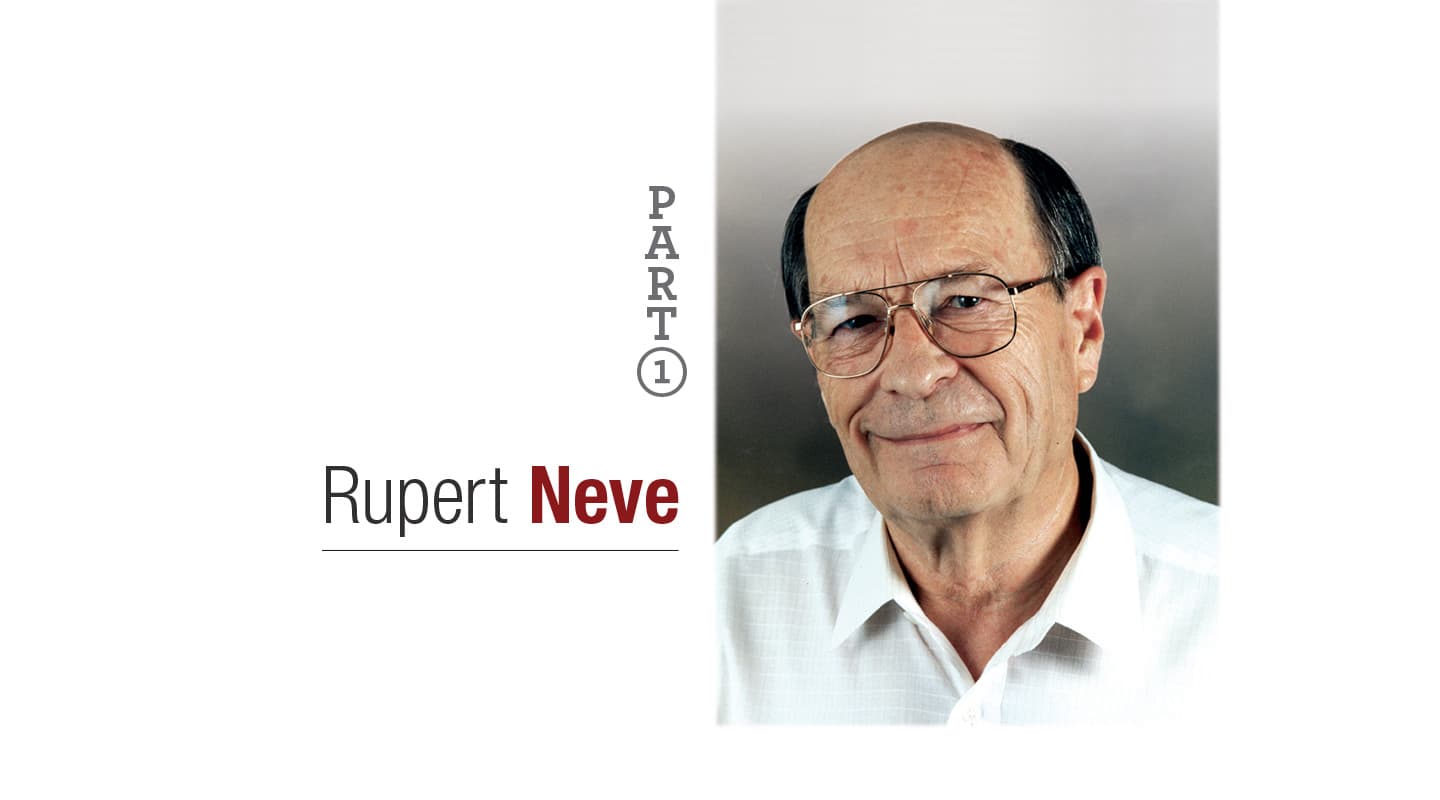
Rupert Neve Interview Part 1
Musicality, warmth, transparency… In the history of pro audio, one name has always been synonymous with these qualities. In part one of our three part interview, Rupert Neve talks to Greg Simmons about the differences between analogue and digital sound, the need for wide bandwidth, and his designs for AMEK’s System 9098 equipment.
Rupert Neve. The name is associated with some of the most cherished and long-lasting pro audio equipment ever made. With a career spanning four decades in pro audio, his reputation has been built on the basic principles of doing the absolute best he can, listening carefully to the equipment he designs, and listening carefully to the people who use it.
In the past, he established two of the most respected names in analogue audio: Neve and Focusrite. His latest work culminates in a series of products designed in conjunction with British console manufacturers AMEK, and collectively titled ‘System 9098’. When Rupert Neve designs something, audio professionals listen. We listened. Then we talked to the man himself.
Greg Simmons: Let’s start with your background as a console designer…
Rupert Neve: I am not academically qualified. I am what I call QBE — that’s my degree — Qualified By Experience. I grew up with valves, and so I was making mixing consoles using valves. One of my customers said, “Have you heard about these new transistors? Do you think they will be any good?”. I really didn’t know the answer, but as more people started to ask about them, I thought I’d better find out.
I had to re-educate myself to start over on the semiconductors. I found that you could actually do more with them than you could with valves, and I got quite excited about it. But there was a lot of folklore going around about the fact that these devices were unreliable and noisy. So it all started with making sure the semiconductor designs produced a sound quality at least as good as the valves. That meant a lot of listening, and a lot of measuring. The more I got into it, the more of a perfectionist I became. I think the same goes for not only myself, but a lot of people who design equipment – you find that you can get a bit of an improvement, so you put it in.
As I had very little in the way of competition in those days — there were only one or two of the big companies, and everyone favours the small man – I was kind of on my own. I had very little overheads and could produce something that was better, even if it was more costly in terms of components. So I just went ahead and made the best consoles I could.
GS: You said transistors can do a lot more than the valve circuitry. I believe you’re a supporter of high dynamic range and therefore high supply voltages. Is that something you could easily transfer from valves to transistors?
RN: With valves, you have a much higher supply voltage and you can get a higher output level. But all the impedances are much higher, so you pick up more noise. If you can work with low impedances, then you will get a greater dynamic range from a valve.
With transistors, it is a question of using the type of transistor which will give you a very low input noise — for example, low rbb type transistors. In some of the early designs, I had a lot of transistors in parallel to try to get the noise down, but that was cumbersome. When integrated circuits arrived – well, not immediately, but after a while – we began to get some very nice integrated circuits with low noise features, which made design a lot easier.
With the semiconductor design, it is very hard to get a dynamic range as good as you can get with a valve. But there are so many disadvantages to using a valve, that we sort of grin and bear it.
I am wondering whether we can’t blame the CD for some of our social problems.
GS: So you adopted the semiconductor technology…
RN: Yes. Just to give you an idea about these things – ‘cause we’ve been working on some low noise designs recently – a chip manufacturer not far from where I live approached me and said they had a 24-bit 96kHz chip, and they wanted to build a console on a chip. When I finished laughing, they said, “No, we are serious! How do we get the audio into this chip? Can you do an audio stage that is as good as 24 bits?”. So I said I would have a go. I said, “24 bits, is that 144dB?” [1] And he said, “Oh no no, we don’t get 144dB. We throw a lot of that away in the housekeeping, 120dB to 126dB of dynamic range is all we can get.”
GS: So they’re losing those last four bits?
RN: Yes. Everybody, in fact, who is honest does that. You don’t get the full 6dB per bit. So I said, “All you have to do is find some suitable devices. You’re a chip manufacturer, maybe you could produce some chips for me. We’ll bump up the rails…” [2] He said, “No, no, no. I mean to get this dynamic range on a single rail of five volts.”
Theoretically it is possible – I’m digressing now – in fact it is very possible. The problem is that you have to redefine all of your source material; your circuits.
GS: So they want to get that extreme dynamic range between zero and +5 volts, no negative rails, nothing. Like TTL logic chips?
RN: That’s right. You can get a dynamic range on a single +5 volt rail if you try, but the problem is that you can’t put the rail voltage up, so you have to put the noise floor down. The only way to get the noise floor down is to drop the circuit’s input impedance down to very low values indeed. It means a special kind of transistor input.
And then you would be looking at, say, a four ohm input impedance for a microphone. Now, you go to a microphone manufacturer and tell him you will give him four ohms load on your input, and you want him to produce a microphone with about 0.8 ohm source impedance. He’ll go mad! It is not practical.
Another way to do this would be to use a transformer, but that is rather self defeating. A decent input transformer that can handle that range is going to be about 20 times the size of the chip and 20 times the price. It may come in due course, but I am not excited about that aspect of it.
GS: It’s interesting that you mention digital at this point, because one of the last questions in this interview was going to be: “What are your thoughts on 24-bit, 96kHz digital technology?” If you don’t mind, we can keep talking about that now…
RN: Well, okay, if you’ve got the patience to listen to me! (Laughs)
GS: Absolutely.
RN: Well, the number of bits is OK, but the sampling rate isn’t. It has to go to twice that. We have to do 192kHz because we need a reliable audio frequency range, free of distortion and noise, up to about 75kHz. [3] I can’t prove that, but there’s a lot of evidence from a lot of people who have done a lot of listening, and we think that if we could get a really good pass band, up to about 75kHz, we would lose absolutely nothing from the state of the art as we know it. Sampling at 96kHz would give you barely a 50kHz pass band, which is not quite enough – the resolution in the time domain is still not quite what it should be.
We can go upwards from a 96kHz sampling rate, and every few kHz you add is going to make it a bit better.
GS: I notice that the System 9098 components all have bandwidths extending up to 100kHz, which obviously relates to what you’ve been saying about the need for higher sampling rates. It seems a bit arrogant of a designer to assume that human hearing stops at 20kHz.
RN: Well, human hearing probably stops a good deal lower than 20kHz, for most of us. I think I’m right in saying that an average healthy eight year old child is able to hear up to 22kHz or more. But as we get older, we start progressively losing out on the high frequencies. People who use their hearing professionally lose less because it is being exercised. The analytical process, as it were, is kept in trim and the neuron flow in the brain is kept active. Just like any athlete, you know, if you keep up your athletic activities you’re going to stay in better trim than if you sit in an armchair for the rest of your life.
And what is more important to an audio person is that you understand what you are listening to and listening for. You may be listening to a particular type of sound, and you’re listening for the artefacts that characterise that sound. So you are much better educated. The more you listen, the more you become aware of things and the easier it becomes to do.
If you are not a professional and you listen to people telling you, for example, that digital sound quality is the best thing ever, then you assume that is the case until someone teaches you different. Then you start listening and making comparisons. And in the course of time, you don’t have to make any real comparisons, you can hear digital a mile off. It’s got whatever it is that it’s got, that particular character of sound. The difference becomes evident to you. That is a matter of education and exercising the qualities that you’ve got.
GS: Your comments on the sound of current digital audio technology remind me of your comments about ‘the searing zip of massive crossover distortion’ associated with early Class B transistor amplifiers [4], and your astonishment at how equipment reviewers of the time heralded it as “the sound of the future to which we should all become accustomed”. [5] It seems the same thing has happened with CD-quality digital audio. Am I making a valid connection?
RN: Yes, it is very similar. And it is very dangerous. We now have a couple of generations of people who, for the most part of it, have heard nothing else. Unless you frequently go to live concerts and listen to real singers and instruments, you tend to think that digital is all you need.
The digital process, as you know, samples, and every sample of the waveform you are listening to produces a switching click. The amplitude of that click will depend on the rate of change of the signal being sampled. A click is a Fourier train of frequencies which is totally random. It is not related to the music. It is a click just like when you click a light switch on and off, and you get a splash sometimes in your hi-fi equipment or your console… er, you wouldn’t get it in one of my consoles, but you might get it in somebody else’s! [Laughs] I’d die rather than let it happen in one of mine!
GS: Certainly!
RN: Well now, that switching click is a random splash of frequencies. It goes on in terms of bandwidth until it dies because your system doesn’t pass it any longer. It goes on way above audibility. It is not related to the fundamental of the music, it is not harmonic.
The same can be said of crossover distortion, where you get a Class B amplifier with a crossover that produces enough discontinuity between the two halves of the device to produce a click. That too is not harmonically related to the music. It’s just a splash.

GS: Like the light switch?
RN: Exactly. Now, the difference between digital and Class B crossover distortion is that the crossover distortion happens twice every cycle, so if you have a 1kHz sine wave, the crossover distortion will create 2000 clicks every second. But CD quality digital makes 44,100 clicks every second, regardless of the frequency.
The amplitudes are a bit different, but frankly, you are aware of these clicks. The mechanism by which we perceive what happens above 20kHz is not known. We have our own private theories about it, but we really don’t know. But there is no doubt that a person is able to perceive frequencies well above audibility, and at very low levels – you don’t need much of it. You can put a signal through equipment which has a pretty poor response above 20kHz, but you are still aware of the presence or the absence of the extended frequencies. Or you are aware of the switching transients which splashed out into those regions above 20kHz.
The digital boys have been very clever by saying that you can’t hear beyond 20kHz, so they move those switching transients – the ‘quantising noise’ – outside the region of 20kHz by filtering. The whole question of whether current standards of digital sound half way acceptable is to do with the filters. That is why things like the Apogee is much better than others, because of the filter shapes they have chosen.
GS: When you were talking about the filters and moving the quantising noise out of the audible band, were you talking about the actual low pass filters on the output or the noise shaping?
RN: Both really. But the filters on the output actually don’t do enough for you. You have to actually move the noise artefacts away from the audio band, but that’s about as much as I know about digital.
GS: Okay, moving on to the next question…
RN: Let me just put a very provocative thought to you. The Japanese showed some time ago that the brain produces electric radiations in the presence of different emotions and emotional stimuli. [6] If you listen to an analogue music signal that is good quality, with no crossover distortion and no digital sampling, it can be a very satisfying experience.
And as you start listening to it, you do the thing which us older ones have done for a long time – you come home after a long, hard day, put a long playing record on, and put your feet up. Even if the record is a bit scratchy, you can listen to it and enjoy it and relax. But you can’t do that any longer…
GS: Because of the distortions of CDs and cheap transistor circuitry?
RN: The Japanese have shown, and in fact a lot of us are accepting quite happily, that these distortions – first of all the lack of music-related frequencies above 20kHz, and secondly the presence of the switching transient noises above 20kHz – actually produce a different form of brain radiation. They produce the kind associated with discomfort, frustration, even anger. I am wondering whether we can’t blame the CD for some of our social problems.
GS: That is a very provocative thought…
RN: You can talk to others, it’s not just me. Talk to George Massenburg, for instance, and he will tell you exactly the same thing. He used to be able to come home and listen to a record, and relax. Now all he does is feel restless and frustrated and switch it off, because it’s a CD. So you get some young person who is already feeling frustrated in society, an angry young man perhaps, and he is listening to CDs and digital sound sources 99 percent of the time, and… you know, I just wonder whether there is a connection there.
GS: There are distortions on vinyl too, although they tend to exist on top of the signal and you can listen ‘through’ them. But on a CD or other digital sound source, the distortions are embedded into the signal itself…
RN: Absolutely. That’s right.
GS: Okay, but with CD, the filters roll off everything above 20kHz quite severely, so how do these switching transients above 20kHz get through?
RN: They come through in the form of noise. If you plot the noise spectrum, you will find that in the immediate octave above 20kHz, up to 40kHz, there is very little noise, practically nothing. But it starts to show itself in the octaves above that, up to 80kHz and higher. This is why I think that frequencies up to 100kHz are really very important. Produce them clean and you are OK. Let the dirt creep in, and you are still frustrated.
GS: In the AMEK brochures, you talk about the importance of having no resonances or ringing in that area…
RN: Yes. That is part of it. Any sharp filter, like the ones used on digital devices, is going to produce this ringing.
If you ever listen to a long distance phone line handled on long copper wires, like in the old days — it’s not so much these days because long distance phone calls are not handled on copper wires – you would find that they were heavily equalised in the range of 2.5kHz to 3kHz, huge amounts of a sort of presence boost were put into the signal to try and get it up and make the signal crisp and intelligible. You could hear that ringing sound, that highly over equalised line sound, it was very very evident.
Hence the name ‘ringing’, it sounded like a bell. It was frequency coherent — you could tell the frequencies in it. If you now move the frequencies higher, you’ve got the same effect. But you reach a point where it is no longer obvious. This gets back to my original point that the educated ear will hear it, even if it is out of band. This is the thing Geoff Emerick did years ago.
GS: Geoff Emerick, the famous British producer?
RN: Yes, he started me off on this trail. A 48 input console had been delivered to George Martin’s Air Studios, and Geoff Emerick was very unhappy about it. It was a new console, made not long after I had sold the Neve company in 1977. George Martin called me and said, “please come and make Geoff happy, while he’s unhappy we can’t do any work”.
They’d had engineers from the company there, and so on. The danger is that if you are not sensitive to people like Geoff Emerick, and you don’t respect them for what they have done, then you are not going to listen to them. Unfortunately, there was a breed of young engineers in the company (I hasten to say this was after I sold it!) who couldn’t understand what he was bitching about. So they went back to the company and just made a report saying the customer was mad and there wasn’t really a problem. Leave it alone, forget it, the problem will go away. They were acting like used car salesmen. I was very angry with it. So I went and spent time there, at George Martin’s request, and Geoff finally managed to show me what it was that he could hear, and then I began to hear it, too.
Now Geoff was The Golden Ears – and he still is – and he was perceiving something that I wasn’t looking for. And it wasn’t until I had spent some time with him, as it were, being lead by him through the sounds, that I began to pick up what he was listening to. And once I’d heard it, oh yes, then I knew what he was talking about. We measured it and found that in three out of the full 48 channels, the output transformers had not been correctly terminated and were producing a 3dB rise at 54kHz. And so people said, ‘oh no, he can’t possibly hear that’. But when we corrected that problem, and it was only one capacitor that had to be added to each of those three channels, I mean, Geoff’s face just lit up! Here you have the happiness/unhappiness mood thing the Japanese were talking about.
GS: So they had left the same capacitor off each of the three offending channels, leaving their output transformers unterminated?
RN: Oh yes. All of the principal parts in my designs are transformer outputs. There is a huge advantage in the total isolation, which we’ll talk about later. But a transformer has leakage inductance. In a good transformer it’s a very small leakage inductance, but it is there. You have to make sure that it is damped out, so that when you are adding long lines or any other load to it, it isn’t going to obtrude. So we put an RC network across the transformer output, which neutralises the leakage inductance. That RC network, which is only a resistor and capacitor, was incomplete on three of these transformers for some reason. We fixed the network, and then there were no problems.
GS: So someone could hear the effect of a 3dB boost at 50kHz. I would imagine that gave you some food for thought…
RN: That was what Geoff was not happy about, it was upsetting him. So I went back, sort of scratching my head and thinking, “well, I’m not going to try at this stage and find out why that’s happening, but I know it does happen. So let’s make sure it will never happen again”. If Geoff and others could hear things going on as high as 50kHz, how high could they actually hear? I did a bit of development work, and found that I could do new circuitry, with a much wider bandwidth, relatively easily. So I redesigned all my transformers and output circuitry, and the general electronics.
GS: Sounds like an important lesson for technicians and equipment designers!
RN: The danger here is that the more qualified you are, the more you ‘know’ that something can’t be true, so you don’t believe it. Or you ‘know’ a design can’t be done, so you don’t try it. Ignorant idiots like me don’t know it can’t be done, so we have a go and it works. [Laughs]
I am not academically qualified. I am what I call QBE — that’s my degree — Qualified By Experience.
1 The theoretical dynamic range of a digital circuit is calculated as being 6dB per bit, so a 24-bit circuit provides 144dB of dynamic range. [It’s actually 6.0206dB, but most designers will say simply ‘6dB’ in conversation.]
2 In electronics, the term ʻrailʼ is often used to describe the power supply voltage, an abbreviation of the term ʻsupply railʼ. Most audio equipment has positive and negative supply rails.
3 Theoretically, the highest frequency a digital circuit can sample is equal to one half the sampling rate, so to sample a 75kHz signal requires a sampling rate of at least 150k. In practice, we tend to go higher than that sampling rate to allow room for processes such as anti-alias filtering.
4 Class B amplifiers use two amplifying circuits, one for the positive half cycle of the audio signal, and one for the negative half cycle. Crossover distortion occurs as the signal crosses through the zero point, where one amplifier ʻswitches offʼ and the other ʻswitches onʼ.
5 These comments appear in the promotional documentation for AMEKʼs 9098 mixing console.
6 Refer to ʻHigh Frequency Sound Above the Audible Range Affects Brain Electric Activity and Sound Perceptionʼ by Tsutomi Oohashi, Emi Nishina, Norie Kawai, Yoshitaka Fuwamoto, and Hiroshi Imai. AES preprint No. 3207 (91st convention, New York City).

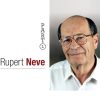
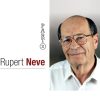








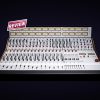





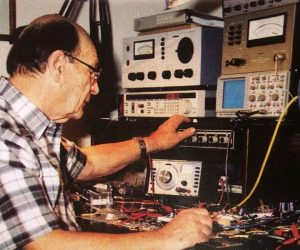




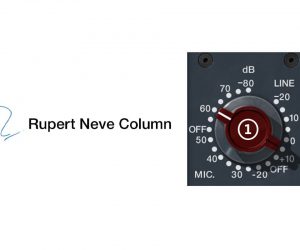
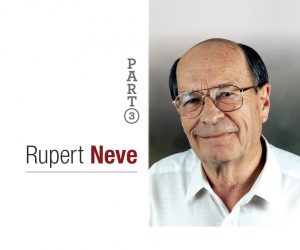


RESPONSES